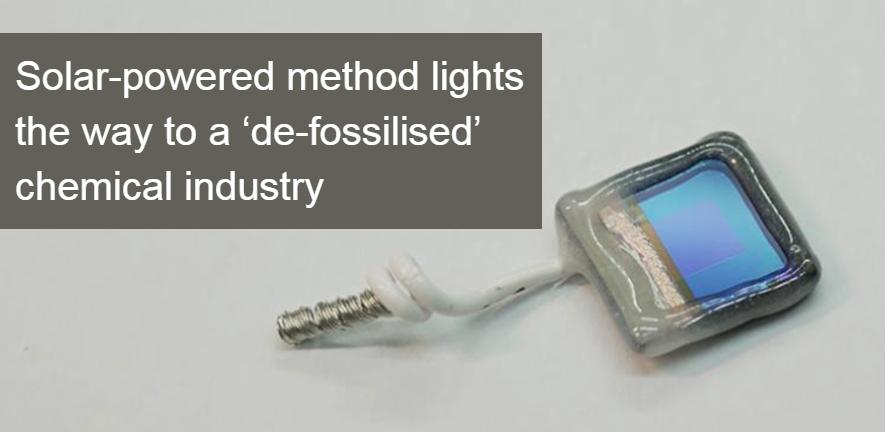
Researchers have demonstrated a new and sustainable way to make the chemicals that are the basis of thousands of products – from plastics to cosmetics – we use every day.
Hundreds of thousands of chemicals are manufactured by the chemical industry, which transforms raw materials – usually fossil fuels – into useful end products. Due to its size and its use of fossil fuel feedstocks, the chemical industry is responsible for roughly 6% of global carbon emissions. But researchers, led by the University of Cambridge, are developing new methods that could one day lead to the ‘de-fossilisation’ of this important sector.
They have developed a hybrid device that combines light-harvesting organic polymers with bacterial enzymes to convert sunlight, water and carbon dioxide into formate, a fuel that can drive further chemical transformations. Their ‘semi-artificial leaf’ mimics photosynthesis: the process plants use to convert sunlight into energy, and does not require any external power source. Unlike earlier prototypes, which often relied on toxic or unstable light absorbers, the new biohybrid design avoids toxic semiconductors, lasts longer, and can run without additional chemicals that previously hindered efficiency.
In tests, the researchers used sunlight to convert carbon dioxide into formate and then used it directly in a ‘domino’ chemical reaction to produce an important type of compound used in pharmaceuticals, with high yield and purity.
"If we’re going to build a circular, sustainable economy, the chemical industry is a big, complex problem that we must address. We’ve got to come up with ways to de-fossilise this important sector, which produces so many important products we all need. It’s a huge opportunity if we can get it right,” Professor Erwin Reisner, Yusuf Hamied Department of Chemistry, University of Cambridge
Reisner’s research group specialises in the development of artificial leaves, which turn sunlight into carbon-based fuels and chemicals without relying on fossil fuels. But many of their earlier designs depend on synthetic catalysts or inorganic semiconductors, which either degrade quickly, waste much of the solar spectrum, or contain toxic elements such as lead.
“If we can remove the toxic components and start using organic elements, we end up with a clean chemical reaction and a single end product, without any unwanted side reactions. This device combines the best of both worlds – organic semiconductors are tuneable and non-toxic, while biocatalysts are highly selective and efficient,” Dr Celine Yeung, co-first author, who completed the research as part of her PhD work in Reisner’s lab
The new device integrates organic semiconductors with enzymes from sulphate-reducing bacteria, splitting water into hydrogen and oxygen or converting carbon dioxide into formate.
Research paper: Celine Wing See Yeung et al. ‘Semi-artificial leaf interfacing organic semiconductors and enzymes for solar chemical synthesis.’ Joule (2025). DOI: 10.1016/j.joule.2025.102165
Read the original University of Cambridge article
Image credit: Semi-artificial organic photocathode, Celine Yeung

